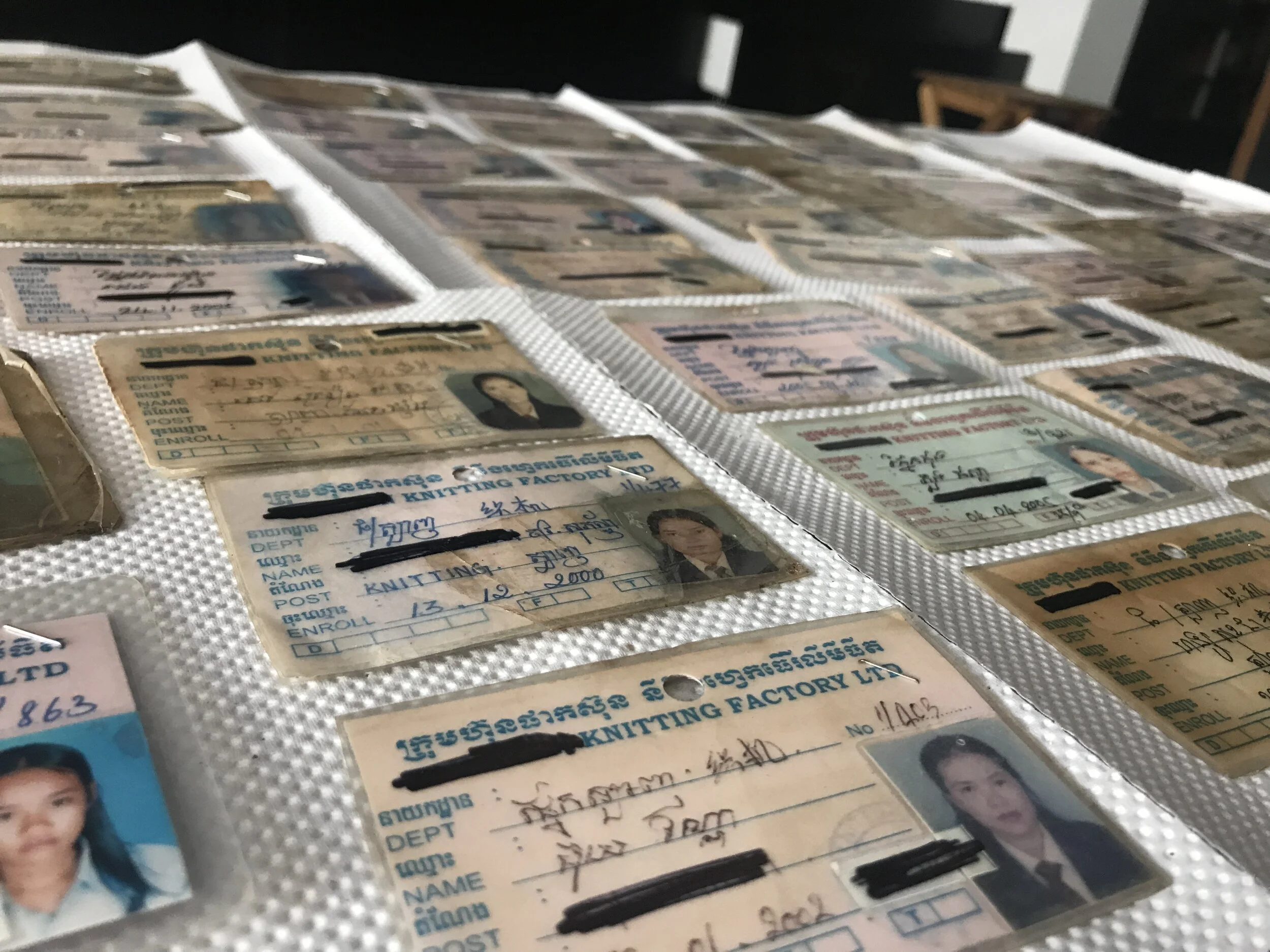Common Threads
In 2009, a large scale knitwear factory in Cambodia closed due to bankruptcy leaving hundreds without compensation. According to local reports, some 130 Cambodian garment factories closed that year, leaving more than 30,000 workers jobless and an additional 30,000 temporarily out of work.
The factory closed leaving thousands of bags of unfinished clothing behind its doors. For almost a decade, the fabric was left forgotten. That is, until October 2017.
In collaboration with Von Wong, we created Clothing The Loop to speak to the environmental issues of the garment industry using some of the leftover fabric.
Upon finishing that project, I discovered hundreds of factory worker identification cards on the factory floor. Individuals, most of them faces of Cambodian women.
For over two years, I would attempt to find these faces, determined to explore their side of the story, to hear what happened since the closure, and to understand from their perspective if anything had changed in Cambodia.
Hundreds of translated messages on Facebook to individuals who bore the same name and with some resemblance, but no luck.
In the meantime I connected with local labour unions, individuals who have seen factories close countless times, including this factory in question. They recognized the cards, and agreed to sit with me for an afternoon discussion to share their own parallel stories.
These stories, though individually important, are often not unique. They represent the narrative for women working in this industry across the country. As we continue to highlight the importance of environmental sustainability in fashion, these stories bring a crucial element to the future of the industry.
Listen to this soundscape recap to explore what the ‘fashion revolution’ really looks like for the women making your clothes.
“The factory is not recruiting the men to work in the factory, so most of the workers are women. The reason they recruit only women is because the factory is afraid that if they recruit the men they will strike.”
“When the buyers come to visit in the factory, they just ask the worker “You need to say something good about the factory”. But some brands are clever, they come straight to the worker and not the employer so they can get more information. ”
“For the jackets for the cold season, it was priced at $250 USD. But at that time the workers just got only $40 USD a month. So she’s felling very sad, very angry and very unfair for the worker. So after that she wants to join the union more and more. ”
“For me I suggest that all the women around the world think like me, that even if its a good price you can buy it but if its very bad labour condition, bad for the women, then I suggest to them to stop buying. ”
Special thanks to
So Somalay, Solidarity Center Cambodia
Mrs. Heng Chenda president, Gender Committee
Mrs. Ken Cheng Lang, Vice president, CUMW
Mrs. Sam Sreymom, Treasurer, FTUWKC
Mrs. Roun Chanthorn, President, UCL.
Mrs. Dourk Savann President Local at Yida Garment factory, CATU





